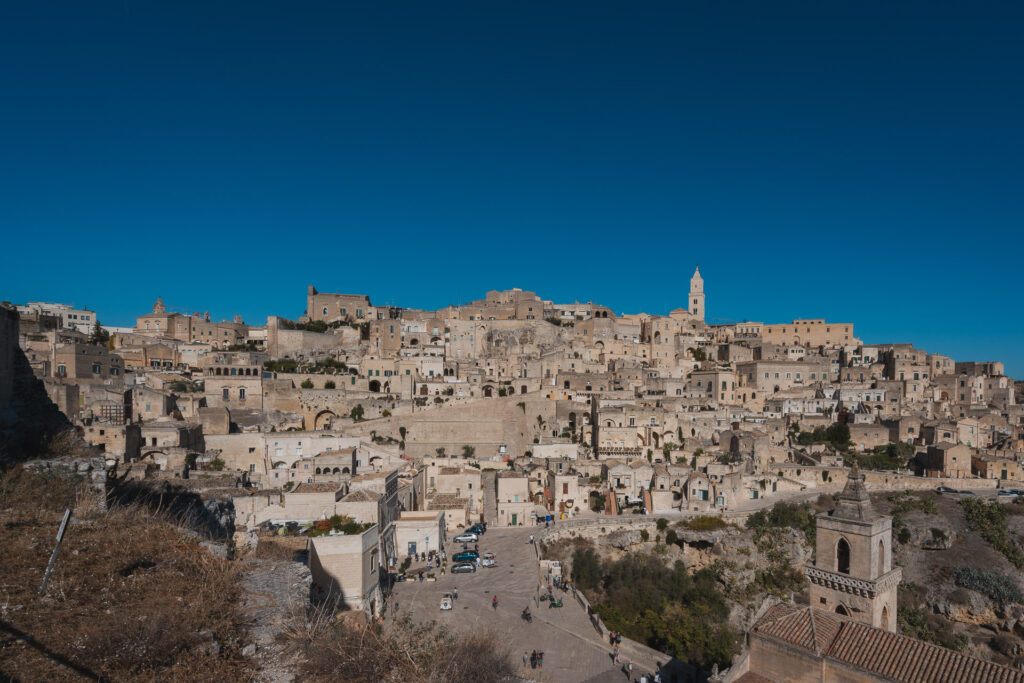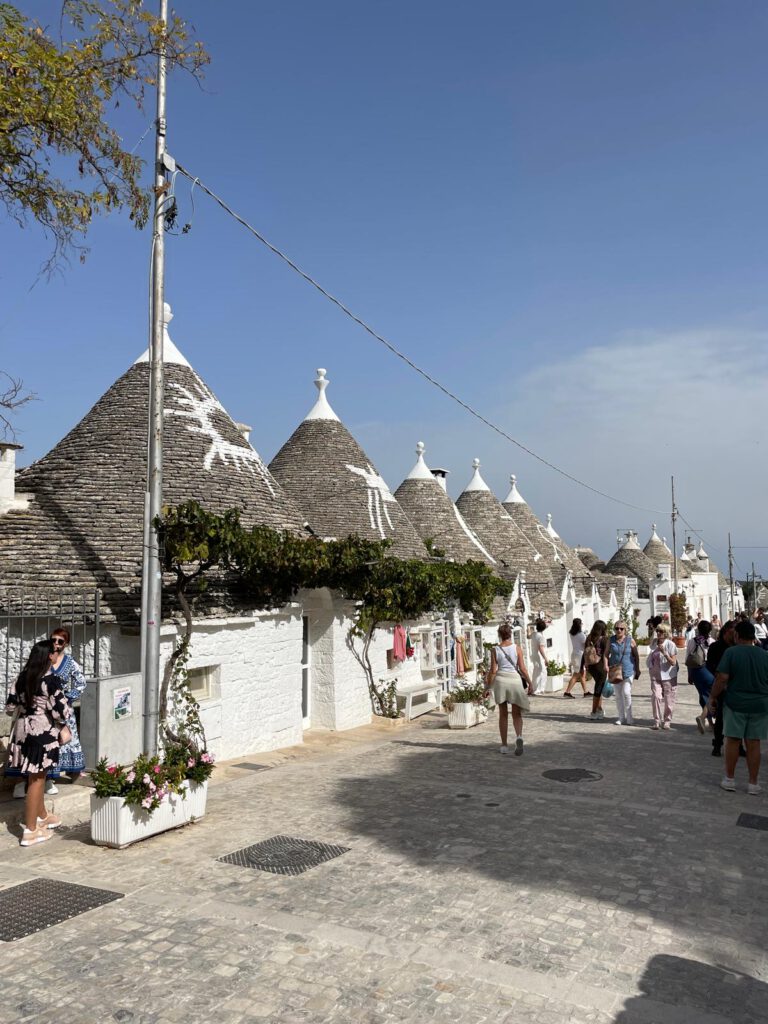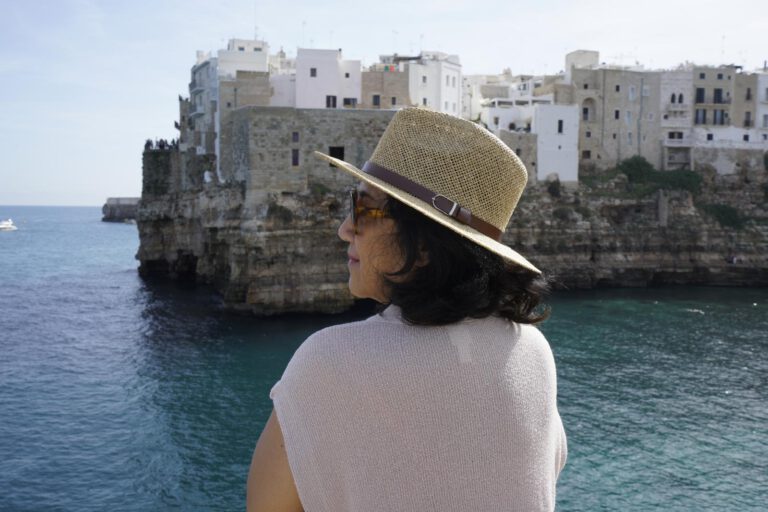Matera’s Timeless Allure – Carved into the Cliffs of Time
Imagine a city not built upon, but within the earth itself. Matera, a UNESCO World Heritage site nestled in southern Italy, is a testament to humanity’s enduring spirit. Its labyrinth of ancient cave dwellings, clinging precariously to the sides of a deep ravine, offers a glimpse into a past that stretches back millennia.
From its prehistoric origins as a Neolithic settlement to its more recent history as a symbol of poverty and redemption, Matera’s story is one of resilience, adaptation, and the enduring power of the human spirit.
A History Etched in Stone

Matera’s origins trace back to the Paleolithic era, making it one of Europe’s oldest continuously inhabited settlements. Evidence of early human life has been found in the form of cave paintings and artifacts, suggesting that the area was a refuge for our ancestors during harsh climatic conditions.
The heart of Matera is the Sassi district, a unique urban landscape composed of a network of interconnected cave dwellings carved into the soft sandstone cliffs. For centuries, the Sassi served as a home to generations of Materans, providing shelter from the elements and a sense of community. However, due to its isolated location and limited resources, the Sassi district also became a symbol of poverty and deprivation.
In the 1950s, the Italian government initiated a massive resettlement program to relocate residents from the Sassi to modern housing. While this effort improved living conditions for many, it left the historic district abandoned and in a state of decay. However, in recent decades, Matera has undergone a remarkable transformation. The Sassi district has been carefully restored and revitalized, showcasing its unique architectural heritage and cultural significance.

In 1993, Matera was officially recognized as a UNESCO World Heritage site, cementing its status as a global cultural treasure. This designation brought increased attention and investment to the city, fostering tourism and promoting economic development. Matera’s UNESCO status has also inspired conservation efforts and raised awareness about the importance of preserving its historical heritage for future generations.
Here’s a 2-day itinerary for Matera that incorporates grotto experiences and stunning viewpoints:
Day 1: Immerse Yourself in the Sassi

- Morning: Arrive at Matera and check into your accommodation. If you’re staying in the Sassi district, you’ll be right in the heart of the action. Our hotel is Le Dimore Dell’ Idris. This is the best location for us as we can see Matera View.
- Afternoon: Start your exploration at Piazza Vittorio Veneto, the main square of Matera. Admire the panoramic views of the Sassi carved into the rockface.
- Descent into the Sassi: Venture into the Sasso Barisano and Sasso Caveoso neighborhoods, where you’ll encounter cave dwellings, churches, and narrow alleyways.
- Afternoon/Evening: Visit the Casa Grotta di Vico Solitario, a restored cave dwelling that offers a glimpse into life in Matera’s past.
- Evening: Enjoy a traditional Materan dinner in one of the many restaurants in the Sassi or on the panoramic terrace of a cave hotel. Our choice of restaurant Osteria al Casale, is undoubtedly one of the finest we’ve encountered throughout our world travels. It is a must try.
Day 2: Explore the Surroundings and Hidden Gems
- Morning: Visit the Palombaro Lungo, a massive underground cistern used for water storage.
- Afternoon: Hike to the Belvedere di Murgia Timone for panoramic views of the city and the surrounding countryside.
- Afternoon: Explore the Church of Saint Mary of Idris, a fascinating rock church with beautiful frescoes. As our hotel is right under this Church, we can easily visit it during sunrise or sunset.
- Evening: Take a leisurely stroll through the Rione Malve neighborhood, known for its charming cave houses and artisan workshops.
Additional Tips:
- Transportation: While Matera is compact, walking is the best way to explore the Sassi. However, taxis and buses are available for longer distances.
- Accommodation: Book your accommodation in advance, especially during peak season. There are options ranging from cave hotels to boutique guesthouses.
- Food: Experience Materan cuisine, which features simple but flavorful dishes made with local ingredients. Don’t miss the pasta, bread, and wine.
- Activities: Besides the itinerary suggestions, you can also visit the Museo Nazionale della Civiltà Preistorica e Protostorica di Matera, take a cooking class, or join a guided tour of the Sassi.
Here are some additional points to consider when planning your trip:
- Best time to visit: Matera is less crowded in spring and autumn, but the summers can be hot and dry.
- Getting to Matera: Matera has a train station and a small airport. You can also reach it by bus or car from nearby cities.
- Where to stay: There are a variety of accommodation options in Matera, ranging from budget-friendly hostels to luxury hotels.
- What to eat: Materan cuisine is a mix of traditional Italian and local specialties. Some of the must-try dishes include pasta fresca, orecchiette pasta, bread, and wine.
- What to do: Besides exploring the Sassi, there are many other things to do in Matera, such as visiting the Museo Nazionale della Civiltà Preistorica e Protostorica di Matera, taking a cooking class, or joining a guided tour of the Sassi.




